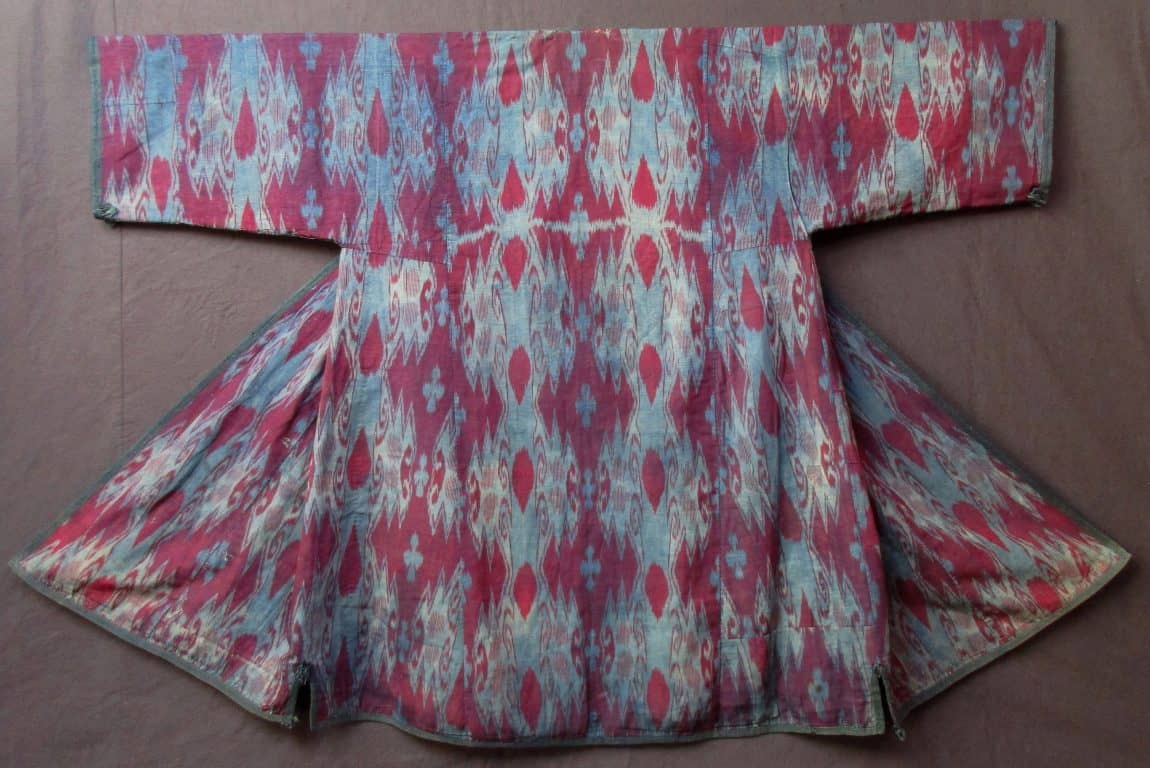Early 19th century Uzbek silk Ikat coat
SOLD
Early 19th century Uzbek silk Ikat coat
reference:
6591
dimensions:
120 cm H
Description
Uzbekistan, 1st half 19th century. Beautiful early silk Ikat robe with great presence. The warp-faced weave has a silk warp and a cotton weft, with original braiding along the edges around the original central Asian block printed cotton lining. An identical lining cloth, or chit, dated to the early 19th century, is in the famous Guido Goldman Collection. It is illustrated in Fitz Gibbon, Kate & Andrew Hale, IKAT. Silks of Central Asia. The Guido Goldman Collection. London, Laurence King Publishing, 1997, Fig. 123, p. 185.
With its extremely fine drawing executed with the greatest precision, both a sign of the outstanding technical skills and the quality of cooperation between the designer and the binder involved in the tie-dying of the silk yarn, and the restricted range of colours (purple and blue), this is a most impressive robe and a real gem from a bygone age. Slight damage to collar and front panel, overall very good condition, soft in the handling
The Textile Museum’s / The George Washington University Museum’s current exhibition entitled Binding the Clouds: The Art of Central Asian Ikat showcases 35 Ikat hangings and panels from the Goldman Collection and is on until 9 July 2018. For a guide to the exhibition, see: https://issuu.com/textile_museum/docs/2018_02_23_btc_brochure_digitaldist. According to Sumru Belger Krody (in this guide, p. 7), the central Asian term traditionally used for Ikat weaving is abrbandi , abr meaning ‘cloud’, and bandi meaning ‘binding’, hence the title of the exhibition.
More information on Ikat weaving, and a rich source of illustrations particularly of robes, is Krody, Sumru Belger, Colors of the Oasis. Central Asian Ikats. Published on the occasion of the exhibition of the Murad Megalli Collection at the Textile Museum, Washington D.C., 16 October 2010 – 13 March, 2011.

